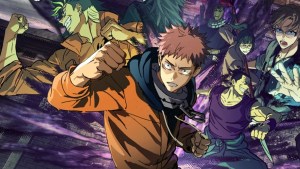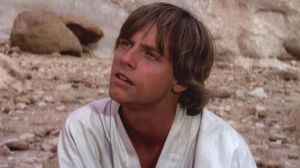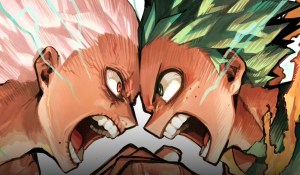
In 2011, IDW Publishing launched a new Teenage Mutant Ninja Turtles series unconnected to decades of existing TMNT comics. Eight years later, the series has reached its 100th issue and is the longest-running Teenage Mutant Ninja Turtles comic ever. Writer Tom Waltz says goodbye to the series at this milestone, bringing the “City at War” story and his long run on the series to an end. With the help of co-plotters Kevin Eastman and Bobby Curnow, the strong artwork of Mike Dialynas and Dave Wachter, and colors by Ronda Pattison, the issue is a fitting conclusion to an inspired reimagining of a fan-favorite franchise.
Videos by ComicBook.com
IDW took the Ultimate approach from Marvel and applied it to the Teenage Mutant Ninja Turtles reboot. The series remixes the best bits of the comics and cartoons that preceded it into something more modern and cohesive. The storytelling approach taken by Waltz, Eastman, and Curnow is more reminiscent of Chris Claremont’s storied X-Men run. It focuses on personal relationships and slow-burn storytelling. At its core, it’s a family drama. First, the drama is about Splinter and his sons, but it doesn’t take long before expanding to include the Turtles’ extended family of allies like April O’Neil and Casey Jones.
The series reached its emotional apex in the “City Fall” arc, the Turtles’ own take on a “Dark Phoenix” like scenario with Leonardo taken in by the Foot. The impact of that story led to Splinter killing Shredder and taking his place as leader of the Foot Clan in Teenage Mutant Ninja Turtles #50, bringing about a new era for the series.
The last 50 issues of Waltz’s Turtles has been about expanding the world and challenging the relationships it built across the first half. The relationships between the Turtles and their father have devolved. The ruthlessnesses Splinter embraced to lead the Foot drove a wedge between him and his sons. At the same time, the once street-level adventures of the Turtles have grown in scale to include alien invasions, interdimensional travel, and the Pantheon, a family of godlike beings reminiscent of the Endless in The Sandman.
With the scale growing so much larger, it could have been easy to lose the intimacy that characterized earlier issues. But Waltz has always kept the focus tight. finding the tender family relationships in the midst of whatever madness may surround it.
That approach serves him well in this final act. Several lingering threads coalesce in the climax of “City of War.” The anti-mutant agency called the Earth Protection Force makes its move against the Turtles. At the same time, the radical mutant group the Mutanimals sets off a bomb that turns unsuspecting humans into mutants. All the while, the struggle between Splinter and Shredder’s granddaughter, Karai, for control of the Foot Clan comes to a head, but is soon overshadowed by the efforts of Kitsune—one of the Pantheon and Shredder’s still-grieving lover of many lifetimes—to summon her father, the Dragon, to level the city.

There’s a lot going on, but Waltz uses it all as a catalyst to bring closure to some of his longest-running arcs, most of which are extensions on the family theme. Casey Jones finally has to accept that his father, the vicious Hun, is never going to be the man he wants him to be. Leonardo and Raphael have been at odds with each other. Raph derided Mutanimals without knowing the full extent of their plans. With guilt driving him to his breaking point, he and Leo finally have the heart-to-heart fans have been waiting for. Karai must reckon with his grandfather’s legacy. Splinter must make the ultimate sacrifice to atone for the acts that ostracized him from his sons. By anchoring the issue in these relationships, Waltz avoids letting the issue become a hollow spectacle.
This would be for naught without Dialynas and Wachter’s ability to find the same emotional resonance in their artwork. There have been many stellar artists that have contributed to this series; Dialynas and Wachter have been among the best when it comes to tapping into the story’s emotional core. They’re simple line styles prevent the busy pages from becoming cluttered, and they shine when zeroing in on raw character moments. Having them on board here as a one-two punch was a wise choice, and they bring the story home with aplomb.
Pattison’s colors unify the art into a singular presentation. The flat colors brings out the cartoonishness often associated with the Turtles. The shading infuses the art with a touch of the grittiness of the original comics. It’s an approach that reflects the philosophy that’s made the series work as well as it has from the start.
The story does get unwieldy in places. Not every beat is resolved to satisfaction. Some of this feels intentional, like leaving the fate of the Mutanimals’ new mutants for the incoming creative team explore. But Karai gets pushed off stage and forgotten once the Dragon becomes the primary threat in a manner unworthy of the character. Worse is Splinter’s sudden, unexplained telepathic abilities. Their manifestation helps keep the pace from getting bogged down, but the lack of explanation is confounding.
But in the end, the creative team sticks the landing. Splinter’s sacrifice feels inevitable, as it should. His reconciliation with Shredder reframes the entire series. It has always been about the Turtles family, nuclear and extended. This issue reframes the story with Splinter firmly at its center. Waltz puts Splinter’s brother-like relationship with Shredder into focus. This reveals the entire series to be a chronicles of Hamato Yoshi and Oroku Saki’s falling out, their alternating rises and falls, and eventual reconciliation after lifetimes of—sometimes literal—soul-searching. The focus on Splinter at the end, bringing his life’s mission to a peaceful resolution by finding balance with his oldest friend and nemesis, is a wholly earned poetic send off.
If you’ve been following Teenage Mutant Ninja Turtles for the better part of the past decade, this issue is a touching and entertaining conclusion to this chapter of the family’s saga. If you haven’t, you’ve missed out on an under-appreciated gem. With Waltz and the company’s story now complete, it is without a doubt a journey worth taking.
Published by IDW Publishing
On December 11, 2019
Written by Tom Waltz, Kevin Eastman, and Bobby Curnow
Art by Dave Wachter and Mike Dialynas
Colors by Ronda Pattison
Letters by Shawn Lee
Cover by Dave Wachter








